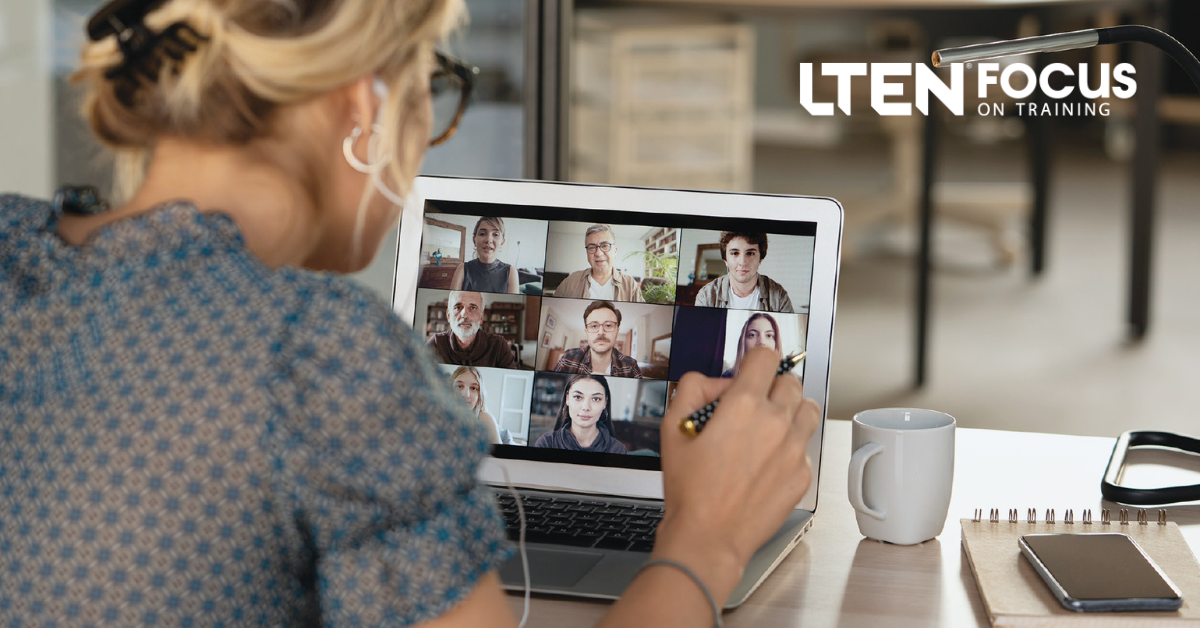
VIRTUAL TRAINING – Cindy Huggett, CPTD
Going it alone? These tips will make it all work
If you have experienced a seamlessly delivered virtual training class without any tech challenges, then you have probably attended one that was supported by a producer. Working behind the scenes, producers support facilitators, trainers, presenters and participants. They typically manage the technology and handle any issues that may arise.
However, for some organizations, having a producer is a luxury. The organization may not have enough resources or funding to have two session leaders. Trainers are expected to facilitate on their own without any support. It’s certainly possible to do so, even if it’s not ideal.
The goal, with or without a producer, is to create an online environment where participants can easily learn. That means having a smooth technology experience from start to finish.
Five Steps to Success
If you find yourself facilitating a virtual training workshop on your own, without producer assistance, you’ll want to ensure that you are prepared and have a backup plan in place for any potential tech challenge. Here are five specific steps you can take to get ready:
1. Log into the virtual classroom extra early.
The typically recommended join time for a virtual class is 30 minutes prior to the start. This gives enough time to test connections, check the audio, load slides and documents, and to be ready to begin before any participants arrive.
As a solo facilitator, I recommend joining 45 minutes in advance. That way you’ll have extra time to fix any potential issues and be ready to greet participants upon their arrival.
2. Connect two devices to the virtual classroom.
In addition to your main laptop, use a second device so that you can have two separate connections to the virtual platform. The first serves as your primary presenter system, and the second is available as a backup in case of a system failure or other disaster.
The second device also adds benefit because it can give you a participant view of the virtual classroom. It allows you to see the platform from their eyes.
3. Draft an email message to participants.
If your devices lock up or you somehow get disconnected from the session, it’s good to have a fast method to reach the participants to let them know what’s happening and when or how to reconvene.
To make this happen, write a brief email to the group, anticipating what you might say if that situation occurs. Add all the participant emails in the TO: line and then save that message as a draft. That way, in case of emergency, it’s ready to send with just a few clicks.
If needed, you could use the email app on your smartphone to retrieve the draft, easily modify it with correct details and hit send.
4. Have an electronic notepad with tech notes.
If a participant needs help with their audio or video, or has other run-of-the-mill tech questions, you want to be able to quickly assist them without having to spend time typing out instructions. You can create a list of common responses (such as, “if your audio isn’t working, click on the microphone button at the top of the screen”) that you can quickly copy and paste into chat as needed.
5. Ask the participants for help.
As much as possible, it’s good to involve participants in the training program and ask for their engagement. You will still manage the tech details (opening polls, sharing files, navigating screens, setting up breakouts, etc.), but you can invite participants to join you in the process.
For example, ask participants to “stamp a spot” on the whiteboard before they type responses. This simple extra step will translate to less work on your part because you won’t have to rearrange overlapping text boxes. And during breakout activities, ask each group to nominate a timekeeper, something that the producer usually does.
One important caveat — there’s no need to let the group know that you are “missing” a producer and need to fill in the gap. Instead, take the approach that “we’re all in this learning experience together, and we all have a role.” It will likely lead to greater accountability in the virtual classroom.
Conclusion
While a few of these items may seem extreme, they each serve a distinct purpose to help create a seamless learning experience for all. Which of these items could you add to your preparation list the next time you facilitate on your own?
 Cindy Huggett, CPTD, is a consultant and author whose books include The Facilitator’s Guide to Immersive, Blended and Hybrid Learning and Virtual Training Tools and Templates. Email her at Cindy@CindyHuggett.com or connect with her on LinkedIn at www.linkedin.com/in/cindyhuggett/.
Cindy Huggett, CPTD, is a consultant and author whose books include The Facilitator’s Guide to Immersive, Blended and Hybrid Learning and Virtual Training Tools and Templates. Email her at Cindy@CindyHuggett.com or connect with her on LinkedIn at www.linkedin.com/in/cindyhuggett/.









